At 40, Aardman Animations Stays Stubbornly Eccentric

In 1995, at pretty much the midpoint of Aardman Animations’ 40-year history, the Bristol-based cartoon studio’s co-founders, Peter Lord and David Sproxton, hatched the crazy idea of making a feature-length stop-motion film. It would be a send-up of the classic prison-break movie “The Great Escape.”
But starring chickens.
“It was really kind of a freak idea,” recalls Lord, who directed what became “Chicken Run,” the first of Aardman’s six features.
This was shortly before Pixar launched the CG revolution with “Toy Story,” and though Aardman was about to win its third Oscar for the Wallace and Gromit short “A Close Shave” [incidentally, the project in which it introduced hit character Shaun the Sheep], hardly anyone was making big-screen cartoon. In fact, apart from the work Henry Selick was doing for producer Tim Burton in the United States [most notably “A Nightmare Before Christmas”], the idea of an entire movie in stop-motion seemed outlandish.
“Audiences love that sense of tangibility, the sense that it isn’t perfect.” David Sproxton
But then, Aardman didn’t get to be the animation powerhouse that it has by thinking like the flock. A certain British eccentricity runs in the company’s DNA, dating back to its origins as a summer sideline, a glorified hobby, really, based in a spare room in Sproxton’s house.
“Now, talking to young people anywhere in the world, I’m surprised how many of them are doing animation,” Lord says, encouraged by a creative sea change they helped to inspire. “Back in our day, it was extraordinarily unusual.” So unusual that neither dreamt of doing it for a living: Sproxton had gone to study geography, while Lord majored in English literature.
And then, practically overnight, their passion started to earn money [the first check they cashed was for a hand-drawn short starring a character called “Aardman,” after whom they decided to name their fledgling studio]. And inspiration struck when they happened to catch American animator Eli Noyes’ “Clay or the Origin of Species” on TV. “That put the idea into our heads that you could animate clay,” Lord says. “Drawn animation was kind of a blind alley for us.”
Working with clay — technically, Plasticine — has since become Aardman’s trademark, being the medium in which Morph [their earliest stop-frame character] and later daffy inventor Wallace and his pet dog Gromit were sculpted. “Audiences love that sense of tangibility, the sense that it isn’t perfect, the fact that you can see the fingerprints,” Sproxton says.
Aardman no longer holds a near-monopoly on stop-motion, as Wes Anderson [“The Fantastic Mr. Fox”] and Laika [“Coraline”] have entered the arena, but the company has slyly managed to keep its old-school charm while staying on the cutting edge. Most recently it collaborated with Google Spotlight Stories to develop a 360-degree video project called “Special Delivery” designed to be viewed on a smartphone.
“That came from the realization that clay animation, which we love, is inherently quite limited,” Lord says. “We wanted to do bigger, more ambitious projects, so we cheerfully moved into anything else. Today, we kind of do a bit of everything.”
Since nearly the beginning, Aardman’s co-founders have adapted to changes in the market by seeking out and empowering young talents. Early on, they were lucky to stumble upon Nick Park, who invited Sproxton and Park to visit the National Film and Television School, where Park was developing his first Wallace and Gromit short, “A Grand Day Out.” The company had just four employees when Aardman’s co-chiefs invited Park to come aboard and help them finish “Babylon,” a stop-motion political satire in which arms dealers destroy the world. The tradition continues, as Aardman tapped Tim Ruffle to spearhead the “Special Delivery” project.
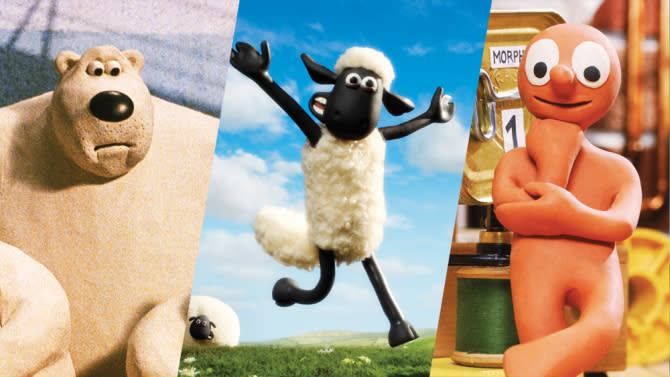
Plasticine Power:
From left: “Creature Comforts” and “Shaun the Sheep” earned Oscar nominations. “Morph” is an Aardman classic.
“You always have to be quite fleet of foot,” says Sproxton, explaining how a company that upholds a certain old-school spirit has actually positioned itself on the cutting edge. When longtime British TV partner Channel 4 commissioned the “Angry Kid” series in the late ’90s, “They were desperate to have online rights. It was actually a deal-breaker.”
When Channel 4 passed, Aardman turned around and licensed it to Atom Films instead, allowing Aardman to recoup its investment more quickly, while gaining massive visibility for a character they’ve kept alive via his own YouTube channel. The company now operates nearly a dozen streaming video channels for its most popular characters around the world. These include Morph, — that early Aardman character resurrected via Kickstarter in a series of new episodes [so popular it was able to make 15 episodes, instead of the intended 10], set to appear on the new Sky Kids app.
“We’re always looking for how to reach our audience,” says Sproxton, whose philosophy is simple: “If it doesn’t work, we’ve lost no time, but we will learn a lot” — and possibly even introduce another beloved Aardman character. That notion dates back to the company’s early days making shorts for Channel 4. “The budgets weren’t big; they were adequate, but what they did was buy you thinking time,” says Sproxton, who focuses on strategic concerns while Lord and Park oversee the studio’s more creative aspects.
Though best known for its big-screen characters, Aardman’s stability comes from the fact it “stands on five legs”: feature films, television series and shorts, partner content, digital and rights [which amounts to selling and licensing all the other properties]. Much of Aardman’s business comes from commercial and short-form commissions, while fan favorites such as Shaun the Sheep have spawned theme park attractions [at Land’s End in Cornwall, for instance] and a pair of live shows in China.
Meanwhile, the company ever-so-tentatively embraces digital technology, recognizing that audiences prefer the stop-motion work to such all-CG attempts as “Flushed Away” and “Arthur Christmas.” But Aardman’s Hollywood partnerships — a decade-long run with DreamWorks Animation followed by a short-lived deal at Sony — brought important lessons, as the box office returns slowly receded from “Chicken Run’s” high-water $225 million haul. While Aardman movies perform just fine compared to other British films in the U.S. marketplace, they fall far short of Pixar and Disney.
“We don’t really understand that audience, particularly the big Midwest bit,” Sproxton says. “So that’s the lesson we’ve learned: Don’t depend on the U.S. money. Control the budgets to play in the territories which are more akin to ours — Europe, the U.K., and to an extent, the Middle and Far East — and if we can make the money work there, the American thing will be jam.”
Note: Peter Debruge will moderate a keynote conversation with Aardman’s David Sproxton and Peter Lord at the Annecy Intl. Animation Film Festival, at 6:30 p.m. on June 14, at the Bonlieu Petite Salle, Annecy, France. Aardman Animations will be presented the MIFA/Variety Animation Personality of the Year Award at 8:00 p.m. on June 15 at the Impérial Palace.
Four Decades of Aardman Milestones
1976:
Though Aardman co-founders David Sproxton and Peter Lord had been working as animators in their spare time since 1972, it wasn’t until four years later that they moved to Bristol and set up shop. “We had registered the name (Aardman) as a kind of a schoolboy prank. You could send off about 50p, and you’d get a little certificate from Companies House,” which registers new companies in the U.K., Sproxton says.
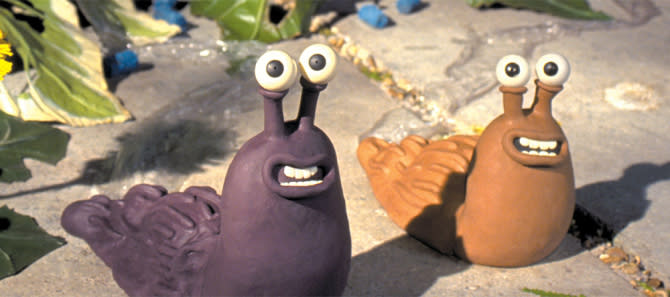
1982: “Creature Comforts”
In a landscape with only three networks, Channel 4 was born with the mission to represent minority interests. “Animation in an adult form wasn’t really seen in the U.K., and certainly wasn’t commissioned [until Channel 4 did in ’85],” Sproxton says. Aardman was an early beneficiary, doing a candid-audio series called “Conversation Pieces” that inspired its Oscar-winning “Creature Comforts” short.
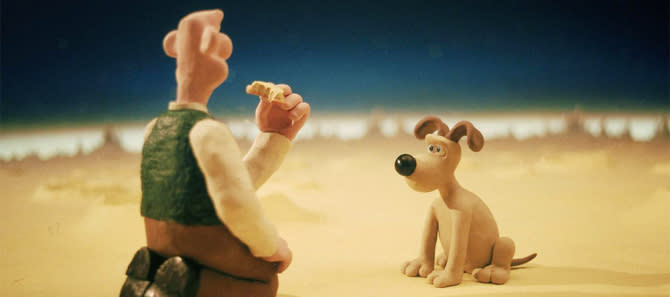
1985: “A Grand Day Out”
Nick Park was finishing his thesis film, “A Grand Day Out,” when Aardman brought him aboard in ’85, putting him to work on a number of memorable early Aardman commissions, including the music video for Peter Gabriel’s “Sledgehammer.” Park’s Wallace and Gromit characters have become the company’s most iconic.
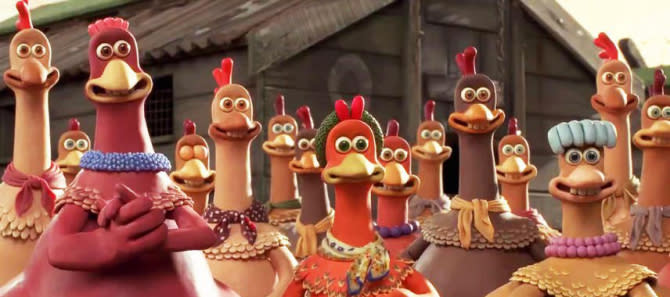
2000: “Chicken Run”
In the late ’90s, Park and Lord paired up to direct Aardman’s first feature, “Chicken Run,” for DreamWorks. “We were very green on the longform side,” Sproxton says. “It was incredibly rewarding, working with Jeffrey Katzenberg and very top-level talent.”
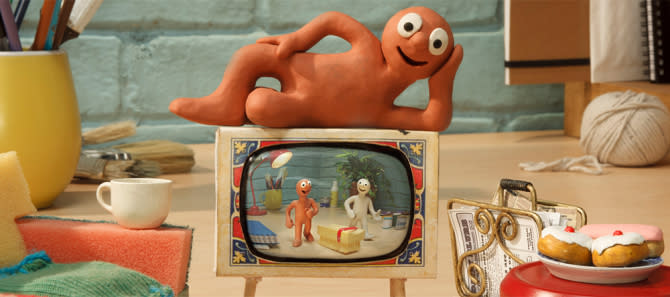
2013: “Morph”
By tapping into Kickstarter to help finance a series of all new adventures for its classic Morph character, Aardman raised enough money to make 15 episodes, instead of the intended 10 — while pioneering another way to test new characters in the marketplace going forward.
Related stories
'Shaun the Sheep,’ 'Adama,’ 'Song of the Sea’ Chase European Film Award
'Legend,’ 'Shaun,’ Smash Benchmarks for Studiocanal
Get more from Variety and Variety411: Follow us on Twitter, Facebook, Newsletter

